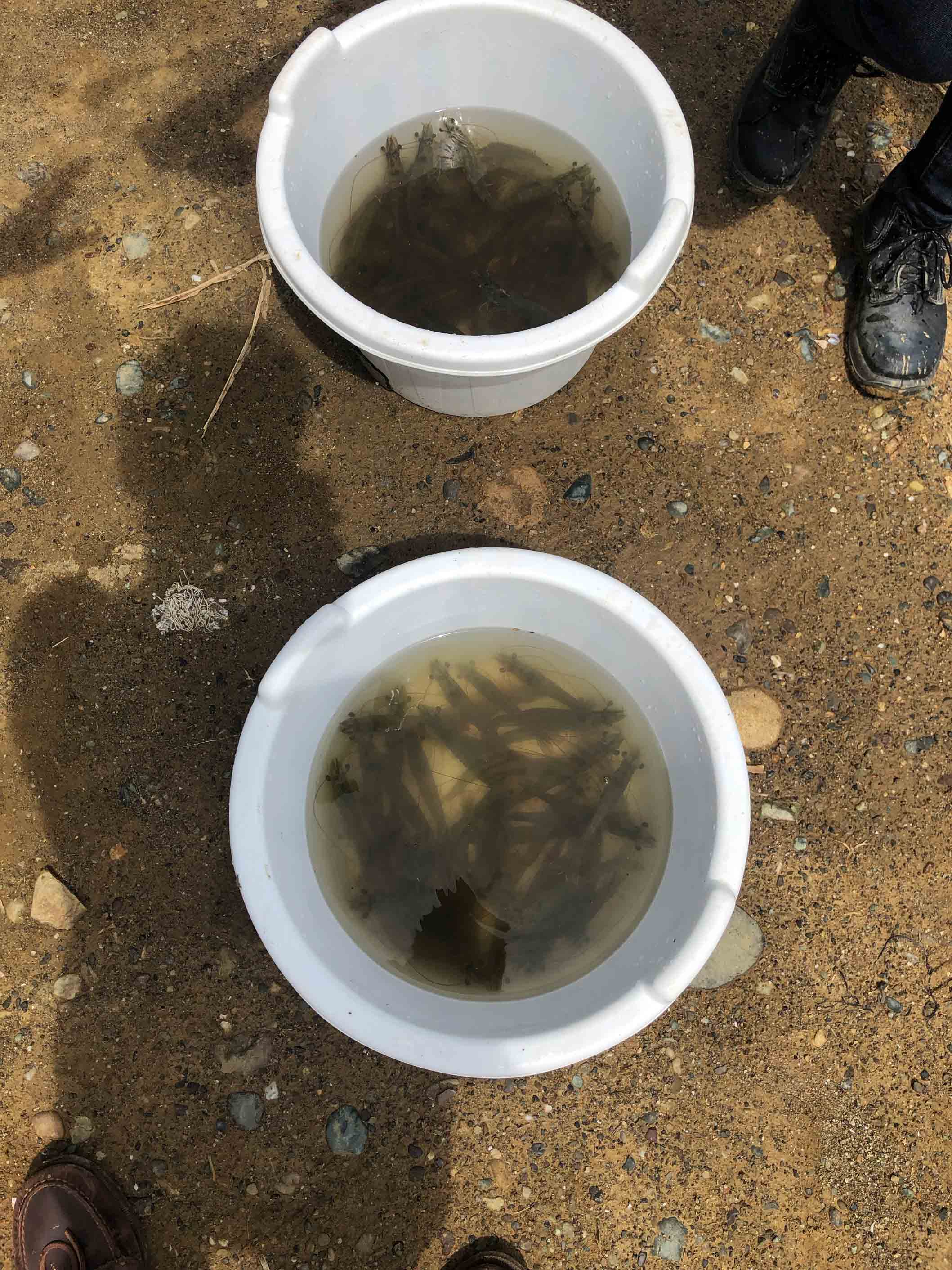GROwth monitoring
Farmers adjust their feed administration rates and schedules according to several variables. These variables include shrimp size and growth rates. Some farmers estimate size and growth rates based on intuition, while most opt to routinely weigh shrimp during the growth cycle. Farmers generally start monitoring shrimp weight and growth after 30 or 40 days into the crop cycle. Sampling is conducted once per week or once every 10 days. It is done by using a cast-net to collect a random sample of shrimp to determine how many shrimp make up 1 kg. With this method, they estimate the average size of shrimp and the estimated survival rates. Using these figures, they estimate growth and feeding rates and forecast partial and final harvesting times. It is important for farmers to keep track and measure the performance of their crop as they can better manage feeding and other operations.
Below is a country comparison on the use of growth monitoring procedures and methods.
Data overview
| www.shrimpfarm.tech by HATCH | Indonesia | India | Ecuador | Thailand | Vietnam | China |
|---|---|---|---|---|---|---|
| Monitoring frequency Infrequently, routinely or on demand |
Routinely, weekly | Infrequently, on demand | Rountinely | Rountinely | Rountinely | Rountinely |
| Weight measurement Mechanical or semi-digital scale |
Mechanical Scale | Mechanical Scale | Mechanical Scale | Mechanical Scale | Mechanical Scale | Mechanical Scale |
| Measurement recording Handwritten, digital or automatic |
Handwritten | Handwritten | Handwritten | Handwritten | Handwritten | Handwritten |
Summary
Almost all farmers interviewed in Indonesia, Ecuador, Thailand, Vietnam, and China routinely sample and measure shrimp weight and growth rates. Indian farmers, however, only sample when they feel the need to. Regardless of region, it appears that most farmers only use mechanical scales and record measurements on paper to be subsequently recorded in a logbook.
Innovation opportunities
This is a technology area has great potential for innovation since measurement results of size and growth of shrimp are used to predict multiple financial outcomes. To overcome the challenge of infrequent and sometimes inaccurate measurements in the salmon industry, underwater sensors, cameras, and image analysis are used to automatically measure sizes, size frequencies, and growth rates. While these tools are already used in cleaner water, the limited visibility of turbid water used in shrimp farming makes the use of such technology challenging.
One Canadian start-up, XpertSea has shown promising results in automating the monitoring of shrimp growth. Their device uses image analysis on samples of live shrimp photographed in a container to inform farmers on shrimp sizes, weight, growth rates and size distributions. As this device is not currently being utilized in-situ in turbid ponds, we predict that new products can meet the need for real-time underwater monitoring of shrimp sizes. Naturally, these could also be used to measure growth rates and predict appropriate harvesting times within the production cycle.
Growth monitoring techniques






